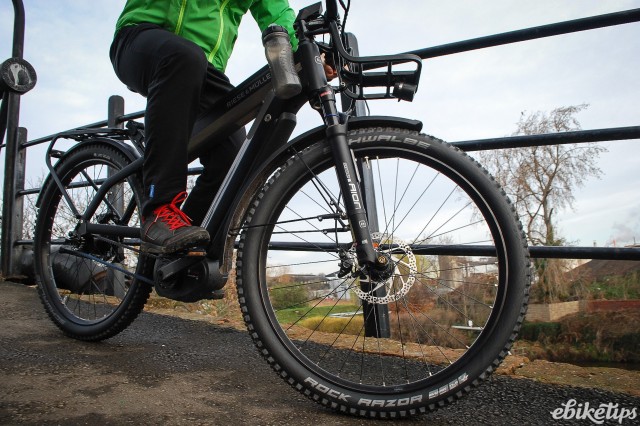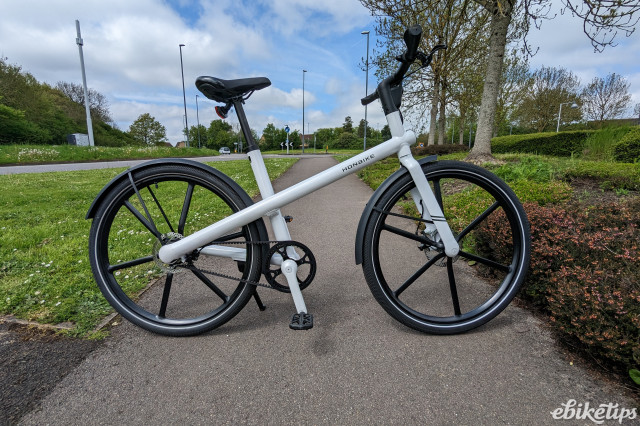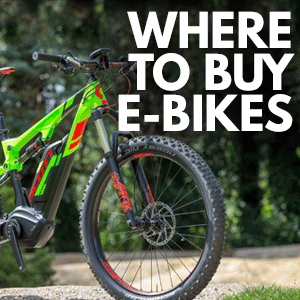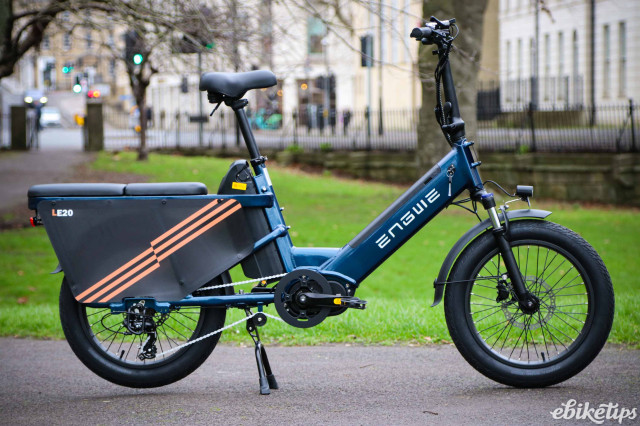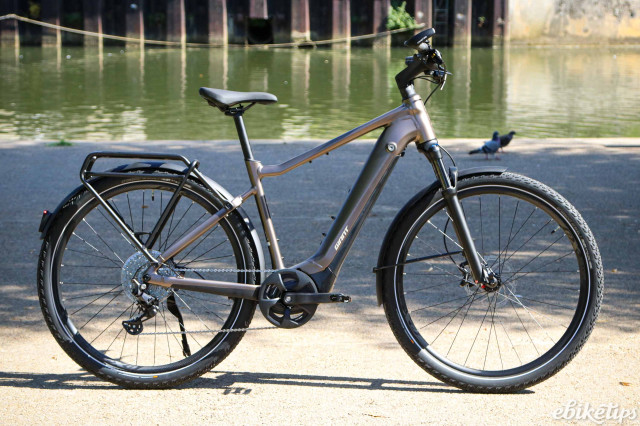Expressing a belief that e-cargo bikes will play, “a central role in our future,” Raleigh has introduced a new range, primarily aimed at families. The firm says its Stride bikes are, “designed to transform everyday trips and unlock a new sense of freedom, fun and discovery.”
Raleigh has a whole section of its business dedicated to encouraging UK businesses to use cargo bikes for greener last mile solutions, but has geared its latest offering more towards domestic uses.
There are two Stride models with names that should allow you to pretty easily distinguish between them. Stride 2 is a two-wheeled bike. Stride 3 is a larger three-wheeled trike. (Give us the Stride 1, Raleigh!)
The one-size-fits-all steel bikes come in black with a dash of mustard-yellow and feature the Bosch Performance CX Cargo Line motor with a 500Wh removable battery. Raleigh reckons this is good for 30-40 miles with recharge time of just under 4.5 hours.
Other than that, you get an Enviolo Cargo hub and shifters, hydraulic disc brakes, integrated front and rear lights, an attached ring lock and mudguards.
Stride also has an EEP foam box on the front that can hold up to 80kg of cargo or 100kg for the three-wheeler.
A range of accessories are also in the offing, including a rain tent; box and bike covers; baby and toddler seats; bench cushions; and Maxi Cosi car seat brackets.
While intended primarily for everyday use, Raleigh are at pains to emphasise that the two Strides would also work for small independent business owners looking to become more eco-friendly, “without burning the bank, or their legs.”
The Stride 2 is available for £4,395, while the Stride 3 trike costs £4,695.
"If you’ve got two cars, do you need two cars?"
The bikes were launched at the Lee Valley VeloPark in Stratford, in the shadow of the velodrome that hosted the track events at the London 2012 Olympic Games.
Raleigh’s managing director, Lee Kidger, told us that the country is at a “crossroads” in how people get around and there was a huge opportunity for cargo bikes, adding that he expected the two-wheel version of the Stride to appeal more to those who already ride, and the three-wheel one to attract those switching to cycling from cars.
“People want to get on bicycles, whether that’s e-bikes, cargo bikes or standard bikes,” he said. “I think we are at a cultural shift at the moment and the pandemic forced people to change, they had to, because you couldn’t go to the gym, you couldn’t go to the office, et cetera.
“Now is the time to make that habit permanent, and if we do that, we can get a lot more people on bikes.
“There’s a lot of sustainability efforts, decarbonisation, Gear Change, all that kind of stuff, and if we make the change and make it accessible for people to ride, not only for leisure and fitness but for transport, I think that’s the big one.
“And what cargo bikes can do, is you can ask yourself the question, if you’ve got two cars, do you need two cars? Car two typically does no more than 10 miles on a journey – going to the shops, dropping the kids off – and a cargo bike is probably a cheaper, more viable, long-term solution.
“And that’s why we’re putting so much focus and effort behind it, because we think that it can change people’s lives,” he continued. “Not only because they’re getting out, they’re getting exercise, they’re not sitting in cars, but also just to drive the CO2 emissions down."
"How do we change non-cyclists into cyclists?"
“I really think these bikes should appeal to non-cyclists, and that’s what we’re doing at Raleigh, focusing on non-cyclists rather than cyclists," said Kidger.
“Asked how the company planned to reach them, he replied: “Through the mainstream media. Expect them to know nothing, then tell them how to use the bike.”
He added: “We are on an educational drive. Five years ago we launched the Raleigh Motus, which is our flagship e-bike, and we now talk to people about how to use that, not in the technical terms, how many gears it’s got, but how many miles can you get on the battery, how do you charge the battery, how do you charge your phone from an e-bike?
“These are all bits of content that people want, because that’s the non-cyclist’s mentality – how do we change non-cyclists to cyclists, that’s what we’re doing.”




